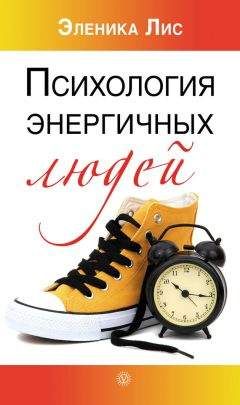Ф. Зенасни - Психология креативности
Практическое значение многофакторного подхода
Основываясь на принципах многофакторного подхода, можно определять творческий потенциал человека, измеряя каждый фактор, необходимый для креативности. Человек может обладать факторным профилем, который соответствует идеальному в большей или меньшей степени. Для каждой конкретной задачи и для каждой области деятельности идеальный профиль будет другим. Поэтому выявление творческого потенциала человека требует сравнения индивидуального профиля с профилем, необходимым для творческого решения конкретной задачи.
Если для оценки творческого потенциала используются тесты на креативность, важно проанализировать, в какой степени эти тесты измеряют все необходимые для креативности факторы. Многие существующие тесты на креативность оценивают почти исключительно когнитивные способности – такие, например, как дивергентное мышление. Однако оценка творческого потенциала, основанная только на нескольких компонентах, будет частичной и неточной. Полная оценка творческого потенциала должна включать методики, измеряющие когнитивные, конативные, эмоциональные и средовые характеристики.
Говоря о возможности повышения креативности, нужно думать о путях развития необходимых для творчества способностей. Большая часть программ по развитию креативности ориентируется на ограниченный круг способностей. Для того, чтобы развивающая программа была достаточно полной, она должна быть нацелена на улучшение всех когнитивных и некогнитивных компонентов креативности. Более того, программа развития креативности может быть подстроена под каждого человека после диагностики его профиля креативности и выявления наименее развитых компонентов.
Другой способ повышения креативности в рамках многофакторного подхода состоит в том, чтобы обучать людей лучшему использованию собственных ресурсов. Люди могут научиться обращаться к одним компонентам во время определенной стадии творческого процесса и к другим – во время следующей стадии. В некоторых случаях можно повысить эффективность творческой деятельности, подстраивая человека под задачу, оптимизируя соотношение между индивидуальным профилем и конкретными факторами, требующимися для решения задачи. Наконец, для оценки эффективности таких программ нужен многофакторный подход, потому что усиление одного фактора, например, усвоение новых знаний в определенной области, может повлиять на другие факторы – такие, как склонность к риску или мотивация.
Литература
Abele, A. (1992), «Positive and negative mood influences on creativity: Evidence for asymmetrical effects», Polish Psychological Bulletin, 23(3), 203–221.
Abra, J. (1989), «Changes in creativity with age: Data, explanations, and further predictions», International Journal of Aging and Human Development, 28(2), 105–126.
Adaman, J. E., & Blaney, P. H. (1996), «The effects of musical mood induction on Creativity», Journal of Creative Behavior, 22, 95–108. Adams, J. L. (1986), Conceptual blockbusting, a guide to better ideas, Reading, MA, Addison-Wesley (3 ed.).
Albert, R. S., & Runco, M. A. (1999), «A history of research on creativity», in R. J. Sternberg (Ed.), Handbook of creativity (p. 16–31). Cambridge, Cambridge University Press.
Alpaugh, P. K., & Birren, J. E. (1977), «Variables affecting creative contributions across the adult life span», Human Development, 20, 240–248.
Amabile, T. M. (1982), «Social psychology of creativity: A consensual assessment technique», Journal of Personality and Social Psychology, 43(5), 997–1013.
Amabile, T. M. (1996), Creativity in context, Boulder (CO), Westview.
Amabile, T. M., Gryskiewicz, N.D. (1989), «The Creative Environment Scales: Work Environment Inventory», Creativity Research Journal, 2(4), 231–253.
American Psychiatric Association (1994), DSM-IV. Manuel diagnostique et statistique des troubles mentaux, Paris, Masson.
Andreasen, N. C., & Canter, A. (1974), «The creative writer: Psychiatric symptoms and family history», Comprehensive Psychiatry, 15, 123–131.
Andreasen, N. C., & Glick, I. D. (1988), «Bipolar affective disorder and creativity: Implications and clinical management», Comprehensive Psychiatry, 29(3), 207–217.
Arieti, S. (1976), Creativity, the magic synthesis, New York, Basic Books.
Artley, N. L., Van Horn, R., Friedrich, D. D., & Carroll, J. L. (1980), «The relationship between problem finding, creativity and cognitive style», Creative Child and Adult Quarterly, 5(1), 20–26.
Asch, S. E. (1956), «Studies on independence and conformity: A minority of one against a unanimous majority», Psychological Monographs, 70, 1–71.
Ashby, F. G., Isen, A. M., & Turken, A. U. (1999), «A neuropsychological theory of positive affect and its influence on cognition», Psychological Review, 10(10), 529–550.
Averill, J. R., & Nunley, E. P. (1992), Voyages of the heart: Living an emotionally creative life, New York, Free Press.
Aviram, A., & Milgram, R. M. (1977), «Dogmatism, locus of control, and creativity in children educated in the Soviet Union, the United States, and Israel», Psychological Reports, 40(1), 27–34.
Ayman Nolley, S. (1999), «A Piagetian perspective on the dialectic process of creativity», Creativity Research Journal, 12(4), 267–275.
Baer, J. (1991), Creativity and divergent thinking: A task-specific approach, Hillsdale, NJ: Erlbaum.
Baer, J. (1994), «Generality of creativity across performance domains: A replication», Perceptual and Motor Skills, 79, 1217–1218.
Baer, J. (1996), «Does artistic creativity decline during elementary school?», Psychological Reports, 78 (3, Pt 1), 927–930.
Baer, J. (1998), «The case for domain specificity of creativity», Creativity Research Journal, 11(2), 173–177.
Baer, J. (1999), «Domains of creativity». In M. A. Runco & S. R. Pritsker (Eds.), Encyclopedia of Creativity (Vol. 1, pp. 591–596), New York, Academic Press.
Barron, F. (1969), Creative person and creative process, New York, Holt, Rinehart & Winston.
Barron, F. (1988), «Putting creativity to work», in R. J. Sternberg (Ed.), The nature of creativity (p. 76–98), New York, Cambridge University Press.
Barron, F., & Harrington, D. M. (1981), «Creativity, intelligence, and personality», Annual Review of Psychology, 32, 439–476. Baumrind. (1991), «Parenting style and adolescent developement», in R. Lerner & A. C. Peterson & J. Brooks-Gunn (Eds.), The Encyclopaedia of adolescence, New York, Garland.
Becker, M. (1995), «Nineteenth century foundations of creativity research», Creativity Research Journal, 8, 219–229.
Belsky, J. K. (1990), The Psychology of aging: Theory, research and interventions (2 ed.), Pacific Grove (CA), Brooks/Cole.
Bideaud, J., & Lautrey, J. (1983), «De la resolution empirique a la resolution logique du probleme d'inclusion. Evolution des reponses en fonction de l’age et des situations experimentales», Cahiers de Psychologie Cognitive, 3(3), 295–326.
Billy, A. (1947), La vie de Balzac, Paris, Flammarion (2 ed.).
Binet, A., & Simon, T. (1905), «Methodes nouvelles pour le diagnostic du niveau intellectuel des anormaux», L’Annee Psychologique, 11, 191–244.
Bink, M. L., & Marsh, R. L. (2000), «Cognitive regularities in creative activity», Review of General Psychology, 4(1), 59–78.
Boden, M. (1992), The Creative Mind, New York, Basic Books.
Botwinick, J. (1984), Aging and behavior, New York, Springer (3 ed.).
Bowers, K. S., Regehr, G., Balthazard, C. & Parker, K. (1990), «Intuition in the context of discovery», Cognitive psychology, 22, 72–110.
Brenneis, D. (1990), «Musical imagination: Comparative perspectives on musical creativity», in M. A. Runco, Theories of creativity (p. 170–189), Norwood (NJ), Ablex.
Brown, R. T. (1989), «Creativity: What are we to measure?», in J. A. Glover, R. R. Ronning & C. R. Reynolds (Eds.), Handbook of creativity (pp. 3–32), New York: Plenum.
Bruce, R. (1989), «Creativity and instructional technology: Great potential, imperfectly studied», Contemporary Educational Psychology, 14, 241–256.
Burns, D. J., & Brady, J. (1992), «A cross-cultural comparison of the need for uniqueness in Malaysia and the United States», Journal of Social Psychology, 132(4), 487–495.
Busse, T. V., & Mansfield, R. S. (1980), «Theories of the creative process: A review and a perspective», Journal of Creative Behavior, 14(2), 91–103.
Calwelti, S. Rappoport, A., & Wood, B. (1992), «Modeling artistic creativity: An empirical study», Journal of Creative Behavior, 26, 83–94.
Carlier, M. (1973), Etude differentielle d'une modalite de la creativite: la flexibilite, Paris, Editions du CNRS.
Carlson, W. B. & Gorman M. E. (1992), «A cognitive framework to understand technological creativity: Bell, Edison, and the telephone», in Weber, Robert John & Perkins, David N. (Eds.), Inventive minds: Creativity in technology (p. 48–79), London, Oxford University Press.
Cliff ord, M. M. (1988), «Failure tolerance and academic risk taking in ten– to twelve-year-old students», British Journal of Educational Psychology, 58(1), 15–27.
Cliff ord, M. M., & Chou, F. C. (1991), «Effects of payoff and task context on academic risk taking», Journal of Educational Psychology, 83(4), 499–507.
Cohen, L. M. (1989), «A continuum of adaptive creative behaviors», Creativity Research Journal, 2(3), 169–183.
Cohen-Shalev, A. (1989), «Old age style: Developmental changes in creative production from a life-span perspective», Journal of Aging Studies, 3(1), 21–37.
Colligan, J. (1983), «Musical creativity and social rules in four cultures», Creative child and adult quarterly, 8(1), 39–47.
Comadena, M. E. (1984), «Brainstorming group: ambiguity tolerance, communication apprehension, task attraction, and individual productivity», Small group behavior, 15(2), 251–264.
Cox, C. M. (1926), Genetic studies of genius. The early mental traits of three hundred geniuses (Vol. 2), Stanford, Stanford University Press.
Cropley, A. J. (1997), «Fostering creativity in the classroom: General principles», in M. A. Runco (Ed.), The creativity research handbook (Vol. 1), Cresskill (NJ), Hampton Press.
Dabrowski, K. (1967), Personality-shaping through positive disintegration, Boston, Little Brown Co.
Dacey, J. S., & Lennon, K. H. (1998), Understanding creativity: The interplay of biological, psychological, and social factors, San Francisco, Jossey-Bass.
Damasio, A. R. (1994). Descartes’ error: Emotion, reason, and the human brain, New York, Putnam's Sons.
Daugherty, M. (1993), «Creativity and private speech: Developmental trends»,Creativity Research Journal, 6(3), 287–296.
Dougan, C. P., Schiff, E.& Welsh, L. (1949), «Originality ratings of department store display department personnel», Journal of Applied Psychology, 33, 31–35.
Doyle, C. L. (1998), «The writer tells: The creative process in the writing of literary fiction», Creativity Research Journal, 11(1), 29–37.
Dreistadt, R. O. Y. (1968), «An Analysis of the Use of Analogies and Metaphors in Science», Journal of Psychology, 68(1), 97–116.
Drevdahl, J. E., & Cattell, R. B. (1958), «Personality and creativity in artists and writers», Journal of Clinical Psychology, 14, 107–111.
Dudek, S. Z., Strobel, M. G., & Runco, M. A. (1993), «Cumulative and proximal influences on the social environment and children's creative potential», Journal of Genetic Psychology, 154(4), 487–499.
Dudek, S., & Cote, R. (1994), «Problem finding revisited», in Runco M. A. (ed.), Problem finding, problem solving, and creativity (p. 130–150), Norwood, NJ: Ablex.
Edwards, S. M. (2000–2001), «The technology paradox: Efficiency versus creativity», Creativity Research Journal, 13(2), 221–228.
Eindhoven, J. E., & Vinacke, W. E. (1952), «Creative processes in painting», Journal of General Psychology, 47, 165–179.
Einstein, A. & Infeld, L. (1938), The Evolution of Physics, New York, Simon and Schuster.
Eisenberg, J. (2002), «Does Individual Motivation and Creativity Predict Group Creative Performance? Yes, But with Some Surprises», Paper presented at the International WAM Meeting, July 2002, Lima, Peru.
Ekman, P. (1994), «Moods, emotions and traits», in P. Ekman & R. J. Davidson (eds.), The nature of emotions: Fundamental questions (p. 56–58), New York, Oxford University Press.
Ericsson, K. A. (1990), «The nature of exceptional performance», in D. L. Baltes & R. M. Lerner (Ed.), Life-span development and behavior (p. 187–217), Hillsdale (NJ), Erlbaum.
Ericsson, K. A., Krampe, R. T., & Tesch-Romer, C. (1993), «The role of deliberate practice in the acquisition of expert performance», Psychological Review, 100(3), 363–406.
Eysenck, H. J. (1995), Genius, Cambridge, Cambridge University Press.
Feist, G. J. (1998), «A meta-analysis of personality in scientific and artistic creativity», Personality and Social Psychology Review, 2(4), 290–309.
Feist, G. J. (1999), «Affect in artistic and scientific creativity», in S. W. Russ (ed.), Affect, creative experience and psychological adjustment (p. 93–108). Philadelphia, Taylor & Francis.
Feldhusen, J. F. (1995), «Creativity: A knowledge base, metacognitive skills, and personality factors», Journal of Creative Behavior, 29(4), 255–268.




